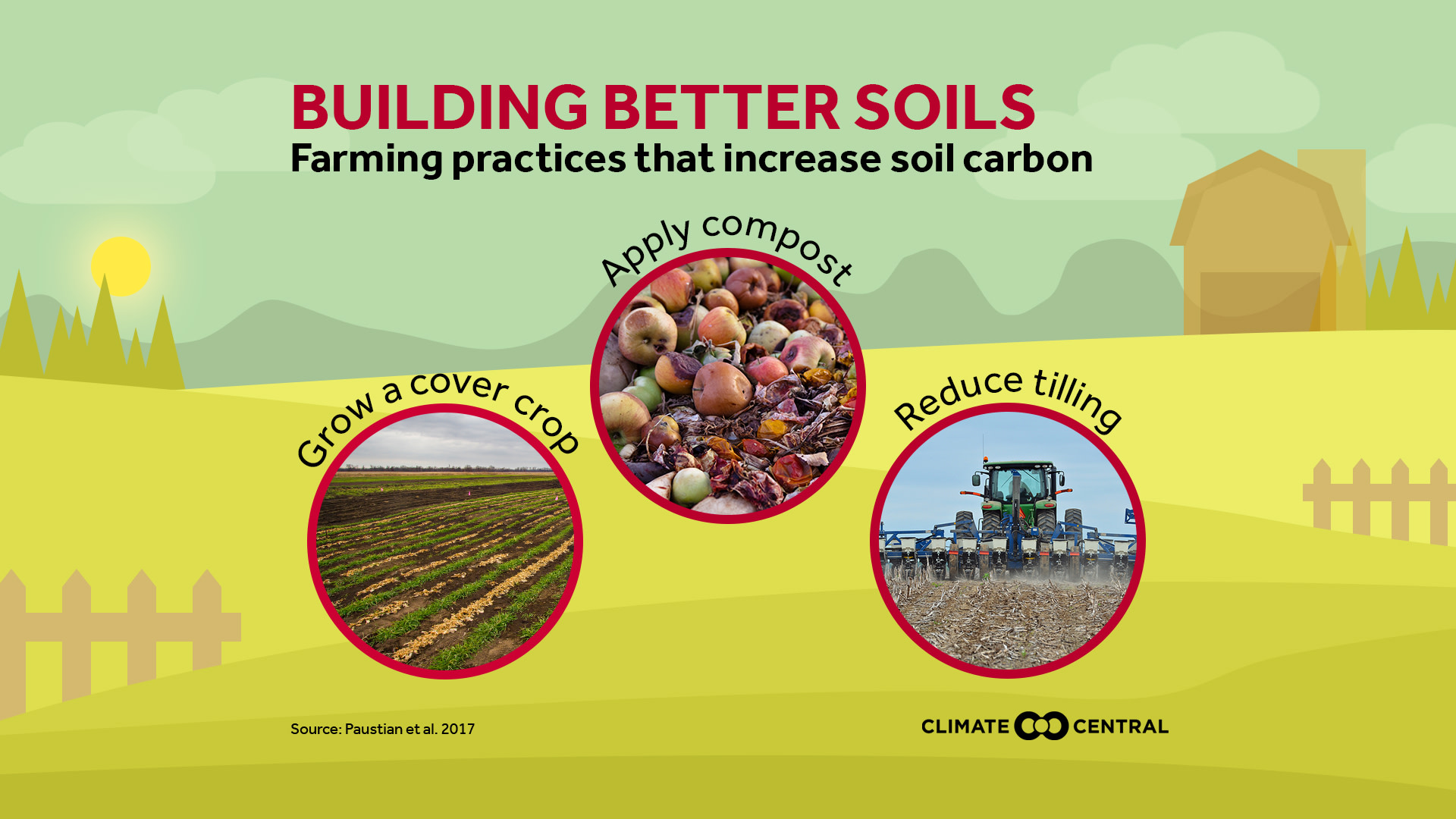Thanksgiving is coming—and while you prep your dinner, farmers around the country are preparing their soils for dinners to come. From compost to cover crops, these late-season practices can improve fertility for future years. Healthy soils also promote the health of our planet, by storing carbon dioxide that would otherwise warm the Earth. A peer-reviewed study in the journal Frontiers in Climate— co-authored by scientists from Climate Central and Colorado State—digs deep to unearth the potential benefits.
According to the authors, a series of “well-known, proven techniques” can help offset our carbon emissions and their impacts. Some techniques (like composting) add carbon to the soil, while others (like reduced tilling) improve the soil’s ability to keep it there. But in many cases, the benefits don’t stop there. Cover crops can limit runoff in wet years and cut evaporation in dry years, in addition to cooling soils in summer and reducing erosion. In a warming world with heavier downpours and flash droughts (plus $8 billion lost each year from global soil erosion), these practices are more crucial than ever.
Carbon storage alone could be a major help. Our state graphics show how much carbon dioxide could be stored by these practices—and the number of cars or homes that emit the equivalent CO2. Nationwide, these practices could store 200 million tons of CO2 per year—offsetting the annual emissions of 42 million passenger cars.
These practices could also lessen the environmental impacts of agriculture itself. Roughly 9% of U.S. greenhouse gas emissions relate to agriculture, from fertilizers to farm vehicles—not to mention the indirect impacts of livestock (yes, including cow burps). And while nearly half of the world’s soils are under some form of agricultural use, most of that land is depleted in carbon and other nutrients.
Restoring that carbon is crucial—especially if fossil fuel emissions continue to rise. According to a 2018 National Academies report, meeting the goals of the Paris Climate Agreement may require 15 gigatons of global CO2 sequestration per year by 2100. Agricultural soils could provide up to a third of that—more than forest improvements and wetland restoration combined.
METHODOLOGY: Agricultural practices and associated carbon storage potentials are described by Paustian et al. (2019) and Paustian et al. (2017). State totals have been aggregated from 2017 county-level estimates, with 2017 equivalences from the EPA Greenhouse Gas Equivalencies Calculator. The Global Carbon Project provides context for global emissions.
